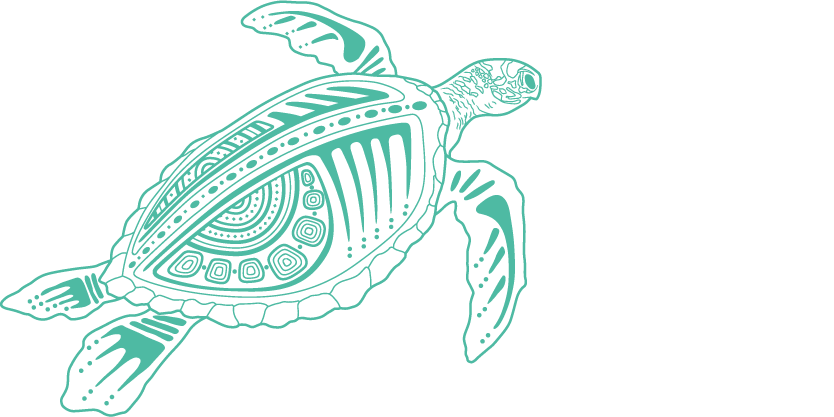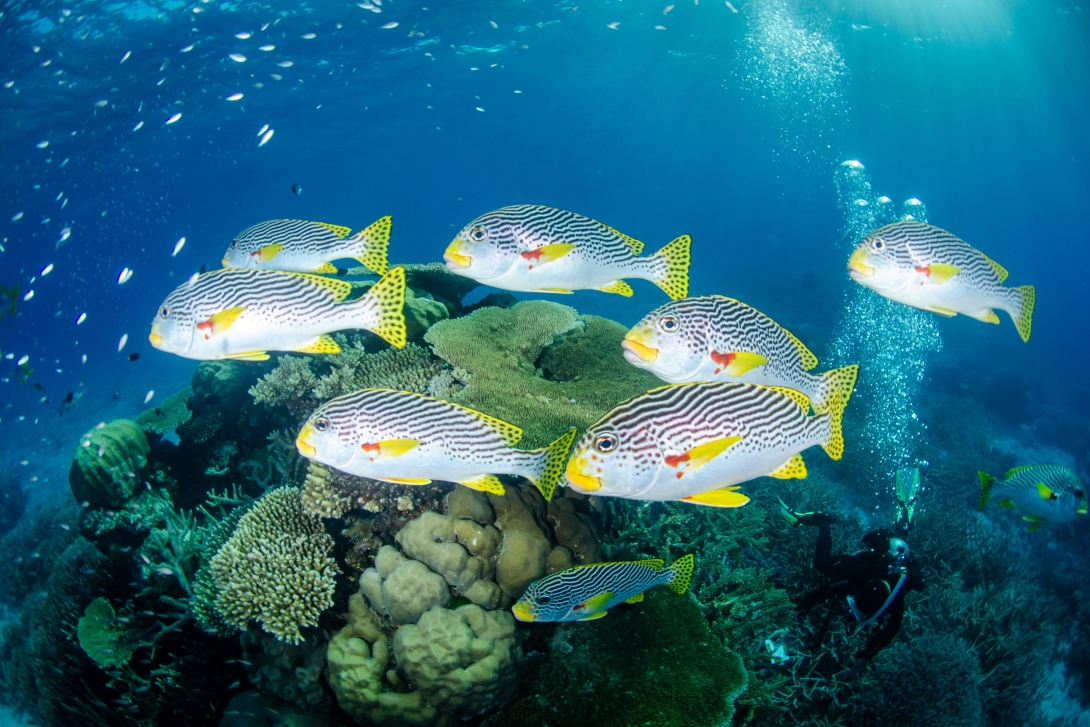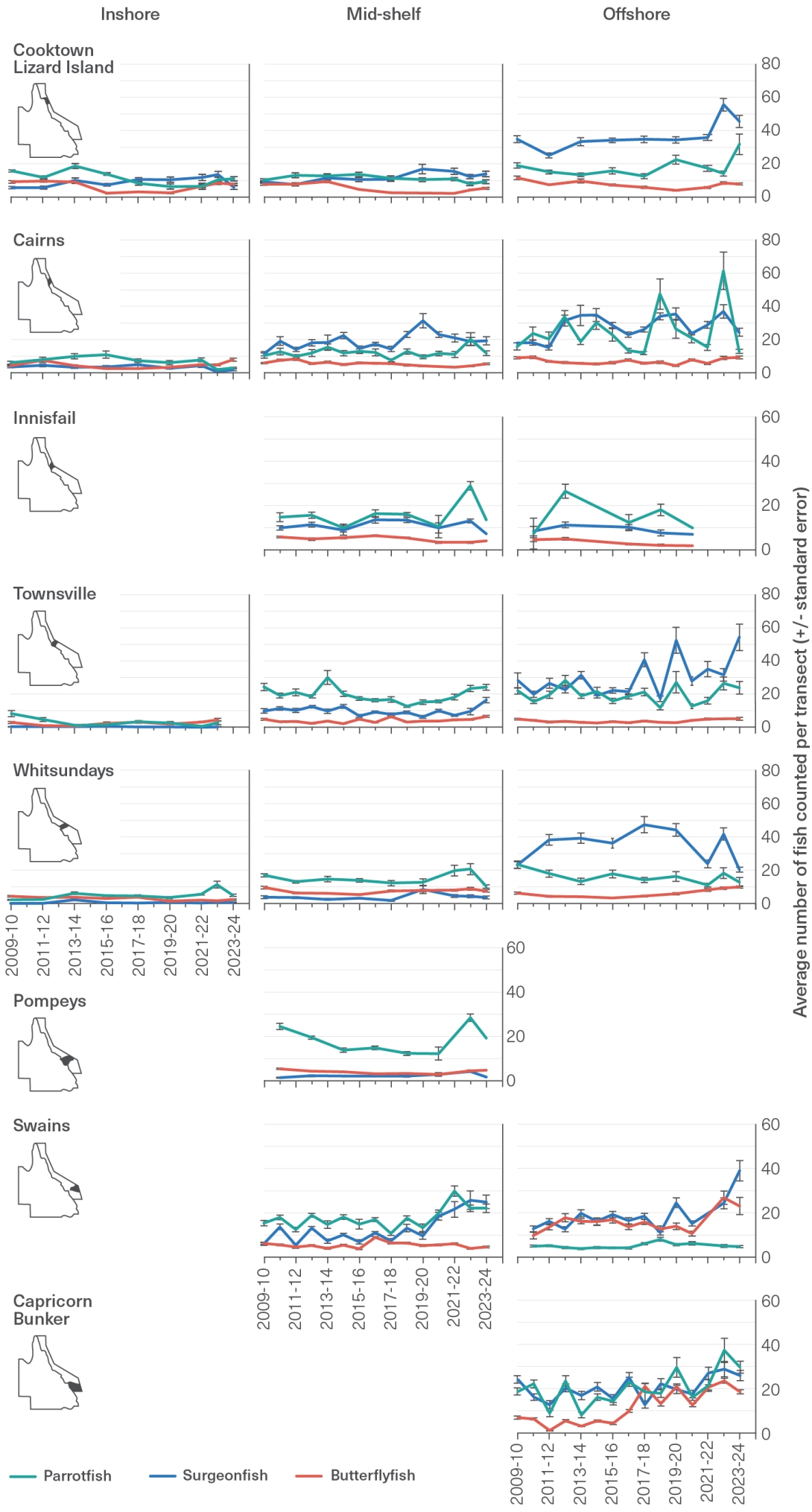51.
Chong Montenegro, C., Thurstan, R. and Pandolfi, J.M. 2024, Diving into archival data: the hidden decline of the giant grouper (Epinephelus lanceolatus) in Queensland, Australia, Aquatic Conservation: Marine and Freshwater Ecosystems 34(2): e4094.
140.
Hayes, M.A., McClure, E.C., York, P.H., Jinks, K.I., Rasheed, M.A., et al. 2020, The differential importance of deep and shallow seagrass to nekton assemblages of the Great Barrier Reef, Diversity 12(8): 292.
252.
Benthuysen, J.A., Emslie, M.J., Currey-Randall, L.M., Cheal, A.J. and Heupel, M.R. 2022, Oceanographic influences on reef fish assemblages along the Great Barrier Reef, Progress in Oceanography 208: 102901.
318.
Hutchings, P., Kingsford, M. and Hoegh-Guldberg, O. 2019, The Great Barrier Reef: biology, environment and management, 2nd edn, CSIRO Publishing, Clayton South.
364.
Able, K.W., Simenstad, C.A., Strydom, N.A., Bradley, M. and Sheaves, M. 2022, Chapter 4 Habitat use and connectivity, in Fish and fisheries in estuaries: a global perspective, eds A.K. Whitfield, K.W. Able, S.J.M. Blaber and M. Elliott, Wiley Online Library, Milton, pp. 188-254.
365.
Stuart-Smith, R.D., Mellin, C., Bates, A.E. and Edgar, G.J. 2021, Habitat loss and range shifts contribute to ecological generalization among reef fishes, Nature Ecology & Evolution 5(5): 656-662.
366.
Ceccarelli, D.M., Evans, R.D., Logan, M., Jones, G.P., Puotinen, M., et al. 2023, Physical, biological and anthropogenic drivers of spatial patterns of coral reef fish assemblages at regional and local scales, Science of the Total Environment 904: 166695.
367.
Muruga, P., Siqueira, A.C. and Bellwood, D.R. 2024, Meta-analysis reveals weak associations between reef fishes and corals, Nature Ecology & Evolution 8: 676-685.
368.
Chamberlain, D.A., Possingham, H.P. and Phinn, S.R. 2023, Predicting the current and future suitable-habitat distribution of tropical adult and juvenile targeted fishes in multi-sector fisheries of central Queensland, Australia, Marine and Freshwater Research 74(4): 357-374.
369.
Hall, A.E. and Kingsford, M.J. 2021, Habitat type and complexity drive fish assemblages in a tropical seascape, Journal of Fish Biology 99(4): 1364-1379.
370.
Wismer, S., Tebbett, S.B., Streit, R.P. and Bellwood, D.R. 2019, Young fishes persist despite coral loss on the Great Barrier Reef, Communications Biology 2(456): 1-7.
371.
Yan, H.F. and Bellwood, D.R. 2023, Multi‐decadal stability of fish productivity despite increasing coral reef degradation, Functional Ecology 37: 1141-1515.
372.
Ceccarelli, D.M., Emslie, M.J. and Richards, Z.T. 2016, Post-disturbance stability of fish assemblages measured at coarse taxonomic resolution masks change at finer scales, PloS One 11(6): 1-22.
373.
Lauchlan, S.S. and Nagelkerken, I. 2020, Species range shifts along multistressor mosaics in estuarine environments under future climate, Fish and Fisheries 21(1): 32-46.
374.
McMahon, S.J., Munday, P.L. and Donelson, J.M. 2023, Energy use, growth and survival of coral reef snapper larvae reared at elevated temperatures, Coral Reefs 42: 31-42.
375.
Spinks, R.K., Munday, P.L. and Donelson, J.M. 2019, Developmental effects of heatwave conditions on the early life stages of a coral reef fish, Journal of Experimental Biology 222: jeb202713.
376.
Bernal, M.A., Ravasi, T., Rodgers, G.G., Munday, P.L. and Donelson, J.M. 2022, Plasticity to ocean warming is influenced by transgenerational, reproductive, and developmental exposure in a coral reef fish, Evolutionary Applications 15: 249-261.
377.
Chong‐Montenegro, C., Thurstan, R.H., Campbell, A.B., Cunningham, E.T. and Pandolfi, J.M. 2022, Historical reconstruction and social context of recreational fisheries: the Australian east coast barramundi, Fisheries Management and Ecology 29: 44-56.
378.
Espinosa, C., Cuesta, A. and Esteban, M.Á 2017, Effects of dietary polyvinylchloride microparticles on general health, immune status and expression of several genes related to stress in gilthead seabream (Sparus aurata L.), Fish & Shellfish Immunology 68: 251-259.
379.
Zhao, H., Xu, J., Yan, Z., Ren, H. and Zhang, Y. 2020, Microplastics enhance the developmental toxicity of synthetic phenolic antioxidants by disturbing the thyroid function and metabolism in developing zebrafish, Environment International 140: 105750.
380.
McCormick, M.I., Chivers, D.P., Ferrari, M.C., Blandford, M.I., Nanninga, G.B., et al. 2020, Microplastic exposure interacts with habitat degradation to affect behaviour and survival of juvenile fish in the field, Proceedings of the Royal Society B: Biological Sciences 287(1937): 20201947.
381.
Jensen, L.H., Motti, C.A., Garm, A.L., Tonin, H. and Kroon, F.J. 2019, Sources, distribution and uptake fate of microfibres on the Great Barrier Reef, Australia, Scientific Reports 9(9021).
382.
Bour, A., Hossain, S., Taylor, M., Sumner, M. and Almroth, B.C. 2020, Synthetic microfiber and microbead exposure and retention time in model aquatic species under different exposure scenarios, Frontiers in Environmental Science 8: 83.
383.
Miller, M.E., Hamann, M. and Kroon, F.J. 2020, Bioaccumulation and biomagnification of microplastics in marine organisms: A review and meta-analysis of current data, PloS One 15(10): e0240792.
384.
Australian Microplastic Assessment Project 2023, Final overview of microplastics across GBR catchments: 2019-2023, Tangaroa Blue and Australian Marine Debris Initiative.
385.
Clements, K.D., German, D., Piché, J., Tribollet, A., Choat, J.H., et al. 2017, Integrating ecological roles and trophic diversification on coral reefs: multiple lines of evidence identify parrotfishes as microphages, Biological Journal of the Linnean Society 120(4): 729-751.
-




